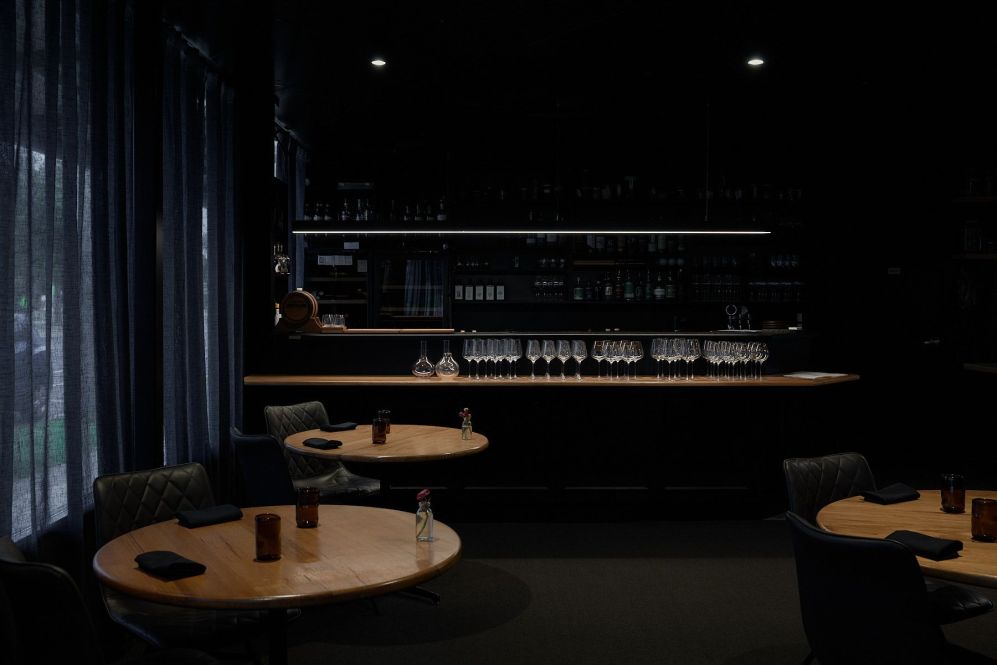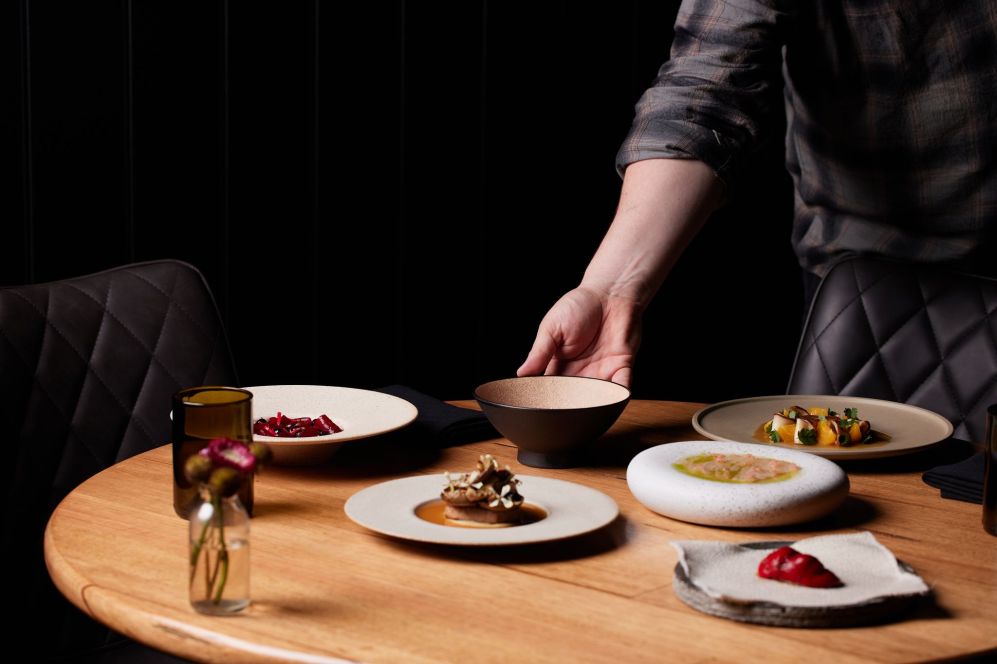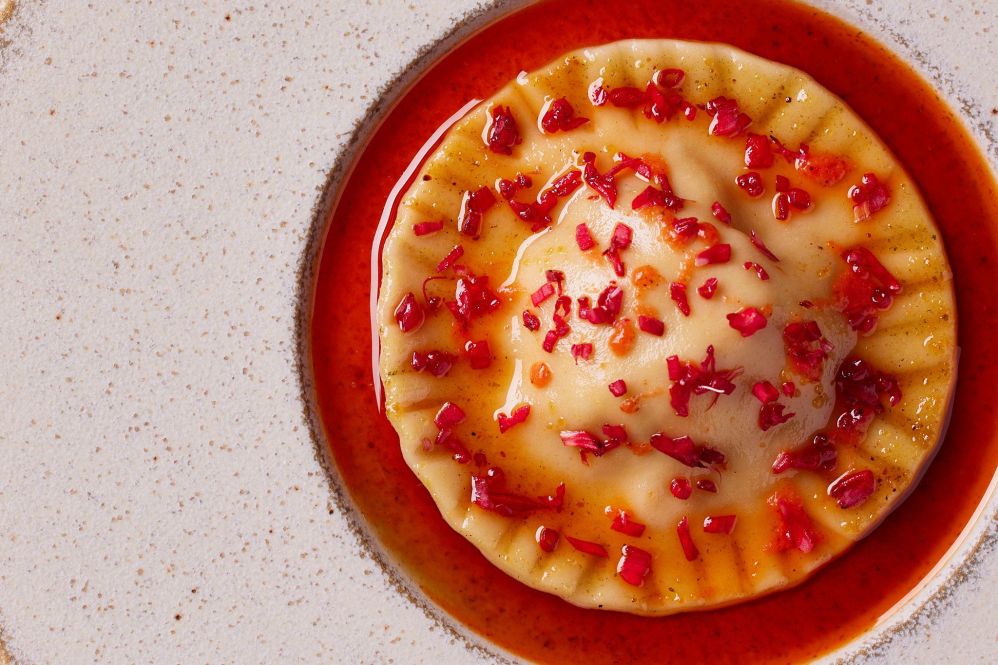Sourcing local isn’t just a trend; it’s an important, sustainable practice that’s found its way into kitchen operations for good. Restaurants now turn to producers within their vicinity to fill menus with the freshest ingredients and run more environmentally friendly kitchens with community in mind.
Blayne Bertoncello, owner and head chef at O.My in Melbourne’s Beaconsfield, doesn’t just source local; he gives new meaning to the term. All the vegetables you see on the restaurant’s menu come from a 3.5-acre farm located a short 15 minutes up the road in Cardinia.
The chef and farm operations manager speaks to Hospitality about the trials and tribulations of running both a farm and a restaurant, the art of cooking seasonally and just how far he wants to take the concept of ‘locally grown and made’.
Working the land is in Blayne Bertoncello’s blood. Born into a long line of farmers, he’s always been passionate about growing and sowing. “My dad’s side are all Italian,” he says. “They moved here as a big group and started up lots of farms together. Dad is a market gardener and my mum’s side were the first orchardists in Australia. I grew up gardening and it was a big part of what I was always wanting to do.”
But Bertoncello followed a less direct path into the familial trade. At the age of 16, he took up an apprenticeship at Melbourne’s Nosh, landing the head chef role after just a year on the tools. He spent four years with the restaurant before moving on.
But when he turned 23, Bertoncello decided it was time to hit the go button on the dream he’d had for many years. So he joined forces with his brothers Chayse and Tyson (who has since launched his own catering company I Like Too Much), to open a bistro in their hometown of Beaconsfield.
The 25-seat O.My opened its doors in 2013. “We basically started as an à la carte restaurant where we did whatever kind of food we wanted,” says Bertoncello, who saw the venture as the perfect opportunity to combine his passions and knowledge. “There was a little garden attached to the restaurant where we grew a few bits and pieces at first,” he says.
“But we would still have to go to the markets to buy the rest of the vegetables and meat. We went with the idea that we would be a local restaurant, so we would only use products from people we knew or who weren’t too far away from the restaurant.”

Bertoncello had everything in place to support his ‘sourcing local’ ethos. But it was just a stepping stone to fulfil a bigger objective — owning a restaurant sustained by its own farm. Thanks to a fortuitous relationship, the goal was well within reach and didn’t take all that long to achieve.
“Our bookkeeper is my brother’s father-in-law and he had a really big 3.5-acre property,” says Bertoncello. “He was growing a lot of things there, but he let us come in and take out what he was planting and basically helped us build our farm.”
It took close to three years for Bertoncello to get the farm to the point where O.My could shift into the self-sustaining model it works off now. Everything on the menu — with the exception of proteins and kitchen staples brought in from the likes of Corner Inlet fishers and Laucke Flour Mills — comes from the farm.
“Progressively, we ended up only using what we grow,” says the chef. “We’re a small restaurant, so we didn’t have to grow a lot to make it happen.” Still, the farming figures are impressive.
Currently, the farm has 600 garden beds growing everything from the pumpkins that inspired Bertoncello’s favourite dish ‘zero-waste pumpkin’ — accompanied by a praline made from pumpkin seeds — to the 20 different types of sage that flavour it.
“There’s around 800 varieties of plants we use,” says Bertoncello. “We’ve got a vast amount of stuff and a lot of it’s perennial, so it just keeps going and going. The more diversity we have in terms of plants and insects, the more the area works for itself rather than us having to apply chemicals and things like that.”

While Bertoncello heads up the operations on the farm, he isn’t the only restaurant staff member who is hands on at the farm. It’s a right of passage for O.My’s staff to work the land, who gain a whole new appreciation for the produce they use in the kitchen when they spend time on the farm. “Because we grow everything ourselves and it takes so much effort, we really don’t want to waste it,” says Bertencello, who puts in the hard yards even before any seeds are planted.
“I sit down every year and put together a full planting list of everything I want,” he says. “I also consider what grows well and what doesn’t. We don’t have any running water on the farm, so we plan everything right down to the smallest detail such as how far apart the plants will be from each other. It’s actually pretty intricate.”
The workings of the farm forced Bertoncello to rethink how O.My serves the public. The restaurant was so heavily reliant on what was coming out of the garden that an à la carte menu was no longer a sustainable option. “We changed our menu over to degustation only,” says Bertoncello. “It helped us hold down a more consistent idea of what we needed to grow to be able to serve what we were going to plate that night. When people order off the menu, they could pick one or two items out of 20 options and then you don’t sell the other dishes.”
O.My’s menu changes daily, revolving around whatever is bountiful at any particular time. As such, the kitchen repertoire is hugely varied and there’s no subscription to the idea of signature dishes. “If what we’ve got happening with the produce lines up well and we really like a dish, we might keep it on, but it generally never happens as we’ve always got something new coming through,” says Bertoncello.

“There’s a lot of thought that goes into the menu. We do the harvest and bring it to the kitchen and then we work it into a dish from there,” says the chef. “We put [the harvest] all together on a big list on Monday and we plan the actual menu on Tuesday before we start prepping on Wednesday. Then, there’s the harvest day on Friday. So we kind of chip away at the menu all week.”
Even in the slower growing period of winter, Bertoncello’s farm bounty remains front and centre. “We produce a lot of pumpkins because they grow well,” he says. “We also grow a lot of tomatoes and zucchini and everything like that during summer. They’re very important because we preserve them in different ways — either in sauces or pickles — and it all gets used throughout the menu over the year as well.”
Different preservation applications allow Bertoncello to showcase produce from the farm when it’s not necessarily in season, with pickling and preserving leaning right into the kitchen’s no-waste ethos.
As the restaurant approaches its 10th birthday, Bertoncello has his sights fixed on the next decade. “We need to move the restaurant and farm onto one property where we will make wine and beer,” he says. “Right now, we’re at the point where we’ve still got so much growth left in the business; we haven’t even really started.”
Sponsored Content

Discover Dairy Farmers’ range of shredded cheese
Sponsored by Bega

Beachfront Melbourne Club catering & restaurant opportunity
Sponsored by Future Food
Trending Now
Resources
Lorem ipsum dolor sit amet, consectetur adipiscing elit. Fusce ac ornare lectus. Sed bibendum lobortis...
Lorem ipsum dolor sit amet, consectetur adipiscing elit. Fusce ac ornare lectus. Sed bibendum lobortis...
Sign up for our newsletter
